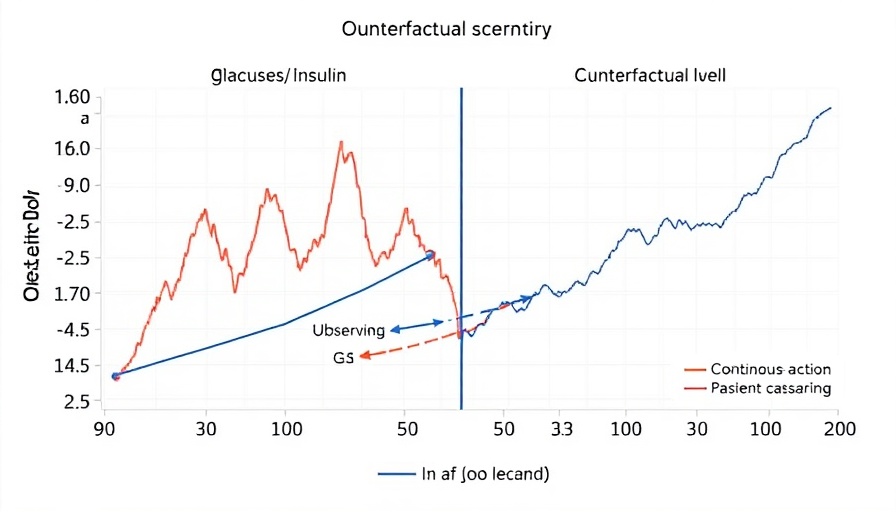
Understanding the Role of Counterfactuals in AI Decision-Making
The field of reinforcement learning (RL) has made substantial strides in enabling agents to navigate complex decision environments. Yet, these agents often function as 'black boxes,' where even the most seasoned professionals struggle to decipher the reasoning behind their actions. This opacity is particularly pronounced in continuous-action settings, such as medical treatment or aerospace control, where the spectrum of possible decisions is vast. This is where the exploration of counterfactuals becomes critical. In such scenarios, understanding what might have happened if different choices were made is invaluable, paving the way for more nuanced AI interactions.
The Importance of Counterfactual Reasoning
Counterfactual reasoning shines particularly in high-stakes scenarios with significant temporal implications. Take the management of type-1 diabetes as an example: an RL agent tasked with determining insulin doses must adapt in real-time to ever-changing physiological signals. Here, counterfactuals allow for alternative decision-making paths to be analyzed, thereby enhancing the learning process. By identifying slightly modified insulin dosages, one can ascertain how these changes could lead to improved health outcomes. This knowledge not only improves patient care but also provides insights into the RL agent's decision-making processes, revealing opportunities for incremental improvements.
Real-World Applications: Diabetes Control and Aerospace
The dual domains explored in recent research—diabetes control and lunar lander simulations—demonstrate the tangible benefits of counterfactual reasoning in RL. In managing blood glucose levels, for instance, RL agents can actively adjust dosages based on numerous parameters, including current glucose readings and carbohydrate intake. Counterfactual analysis allows decision-makers to visualize the effects of small changes in insulin policy without compromising patient safety, thus fostering a more adaptive healthcare environment.
Counterfactuals as Tools for Safety and Oversight
Incorporating counterfactual explanations into RL systems serves as a diagnostic tool for refining agent behavior. By extracting these insights, medical professionals and engineers can better assess whether decisions made by RL systems align with safety protocols and performance standards. This not only builds trust in AI systems but also ensures that human experts can intervene decisively when necessary, highlighting a crucial aspect of AI in high-stakes environments.
From Decision-Making to Generalizable Insights
The method of constructing counterfactual policies does not stop at single use-cases; instead, it aims for generalizability across various scenarios. By embedding fixed behaviors and utilizing augmented Markov Decision Processes (MDP), the framework can consistently generate meaningful counterfactual explanations. This process helps to isolate flexible aspects of agent behavior while adhering to critical domain constraints, ultimately achieving both adaptability and compliance.
Future Trends: Expanding the Use of Counterfactuals in AI
The implications of counterfactual reasoning are vast and extend beyond healthcare and aerospace applications. As CEOs, CMOs, and COOs explore AI for organizational transformation, understanding the underlying rationales of AI decision-making will become paramount. The ability to iteratively improve processes and align AI outcomes with strategic business goals will ensure that organizations remain ahead in this rapidly evolving digital landscape.
In conclusion, diving deeper into counterfactuals offers a pathway not only to enhance RL agent performance but also to refine how businesses utilize AI in everyday decision-making.
 Add Row
Add Row  Add
Add 




Write A Comment